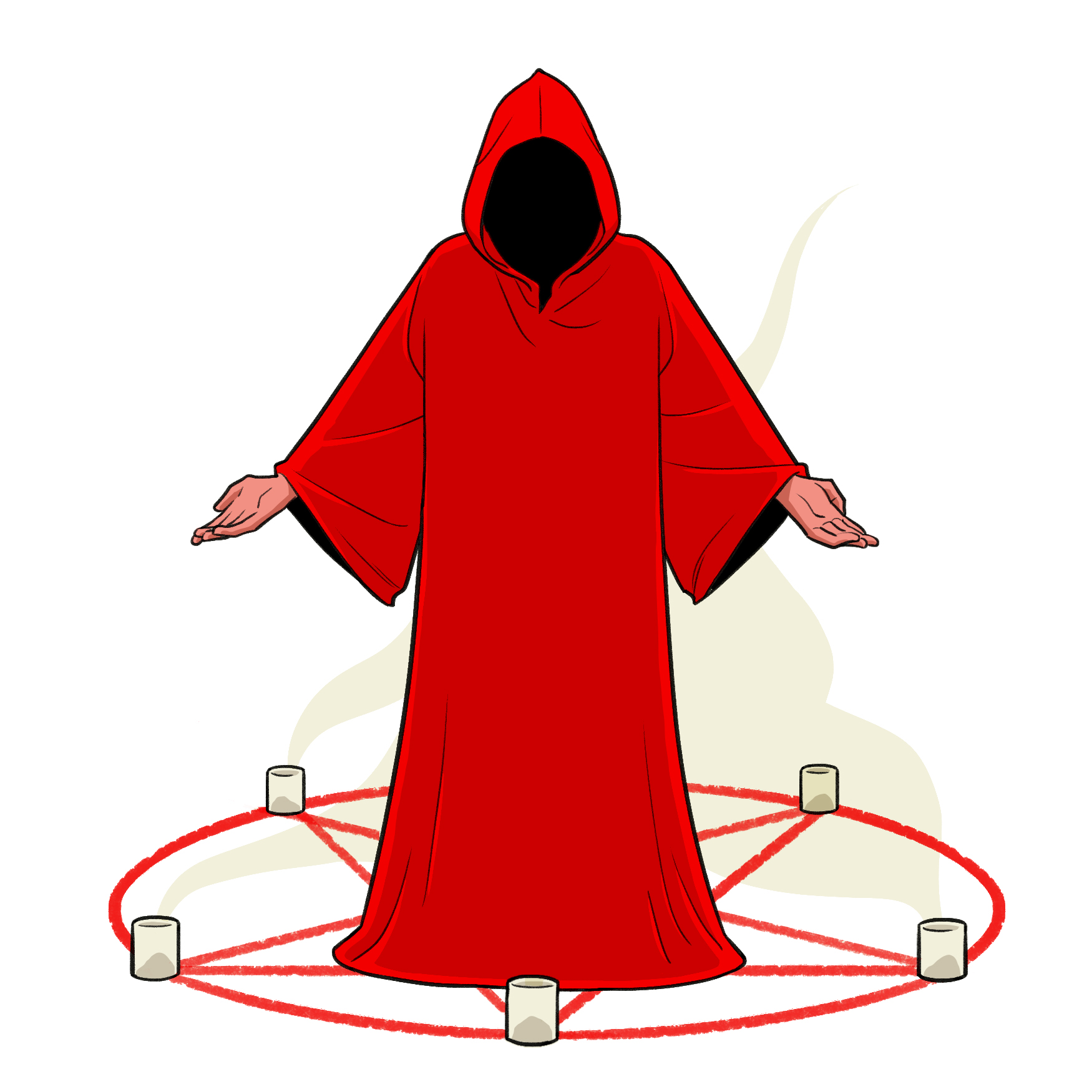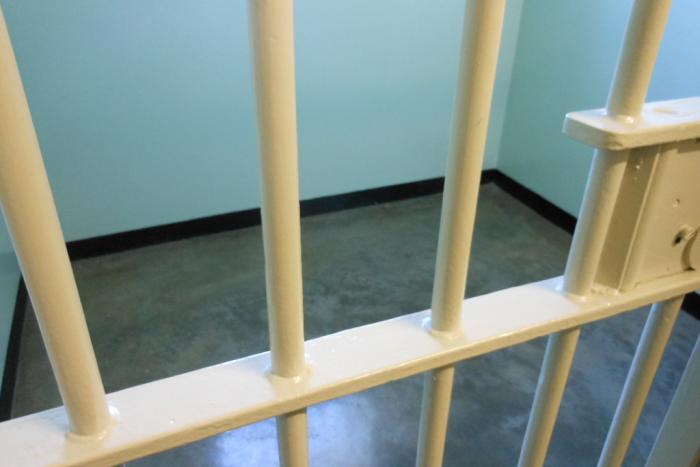The moon has cast a spell on us since before we were human. After our nocturnal animal ancestors evolved the ability to focus on distant objects, they looked out from the treetops and saw that the moon was something different. It crossed the night sky in a manner unlike every other part of the natural world. It moved smoothly. It grew full and waned to a regular rhythm that was unaffected by events in the rest of the world, but which cast an inescapable influence over that world. It was separate from us, unreachable.
In time the moon became associated with dreams, love, longing and imagination, and all that was intangible. It was something that we yearned for, but could never claim. This didn’t stop people fantasizing about travelling there. The second-century Syrian writer Lucian claimed that a waterspout had transported his ship to the moon, in a book admirably entitled A True History. He found himself in the middle of a war between the King of the Moon and the King of the Sun. There were no women on Lucian’s moon, and children had to be born from men. In the early seventeenth century the Welsh bishop Francis Godwin wrote of travelling to the moon in a vehicle pulled by wild swans. The moon was a utopian paradise, he reported, populated by lunar Christians. When Jules Verne wrote his novel From the Earth to the Moon in 1865, in which members of the Baltimore Gun Club built a giant cannon and fired themselves into space, it seemed just as fantastical as the stories of Godwin and Lucian.
In the 1960s the unreachable was claimed and the dream became reality. Going to the moon required romantic madness in order to believe that it could be done, and practical genius to make it happen. This is a rare and complicated psychological makeup, and one which has its dark side. Landing on the moon is still the single greatest achievement in history, and one dedicated to “all mankind.” Yet it was also an act of single-minded determination and it took wild, dedicated individuals to achieve it. As the sociologist William Bainbridge observed, “Not the public will, but private fanaticism drove men to the moon.”
*
The cosmos itself, as we understood it when Einstein’s theory was first published, contained the planet Earth and seven other planets revolving around the sun. Pluto was not discovered until 1930. It was clear that, beyond our immediate solar system, there did seem to be an awful lot of other stars out there, but quite exactly what that meant was open to debate. This ignorance did not last, and the story of cosmology in the twentieth century was one of a continuous expansion of both our knowledge and our sense of awe.
In March 1919 the English astrophysicist Arthur Eddington sailed to the African island of Principe. His goal was to record the position of the stars during a solar eclipse, in order to find out if Einstein was right. Common sense and Newton’s laws said that light from distant stars would be unaffected when it travelled close to the sun. But if the fabric of reality did curve in the presence of mass, then the path of light from distant stars would also curve. Those stars would appear to be in a slightly different position when the sun passed them. This could only be tested during a solar eclipse because the brightness of the sun made recording the position of the stars around it impossible.
Eddington’s mission was a success. The universe behaved as Einstein’s theory predicted. But Einstein’s work predicted a lot of other strange things as well. It suggested the possibility of “black holes,” areas of matter so dense that everything nearby was pulled inescapably into them, including light. Relativity also claimed that the curved nature of space-time allowed the universe to be a finite size, but not come to an end. A spaceship travelling the length of the cosmos would not eventually fall off the end of the universe. Instead, it would find itself back where it started, like an ant walking around the circumference of a football wondering when the damn ball would come to an end. The concept of the centre of the universe, which made perfect sense in a three-dimensional universe, was meaningless in the four-dimensional universe of space-time. It was simply not possible to locate the edges of the universe, let alone work out a midway point between them.
Observations of the universe improved continually over the century. It became apparent that the air pollution over London hindered the work of the Royal Observatory in Greenwich, so the telescopes were packed away in 1948 and moved down to the clearer air of Herstmonceux in Sussex. Omphaloi may claim to be fixed points, but they never last. By 1984 Sussex was also deemed unsuitable, so the observatory was moved to the Canary Islands. High altitude and remote locations provided the greatest views of the heavens, so telescopes were built in locations in Chile, California, and Hawaii. Even these began to show their limits, and some of our greatest telescopes are now placed above the atmosphere, in orbit around the planet. As a result the level of detail in our images of space increased exponentially during the twentieth century.
The universe was no longer “just there,” supporting us. It had been born, it was growing, and one day, perhaps, it would die.
It gradually became apparent that the cosmos wasn’t just sitting there, eternal and unchanging. The universe was expanding, like a balloon being inflated. And if the universe was expanding, then it stood to reason that it used to be smaller. If you went far enough back in time it would get smaller and smaller until it had shrunk down to nothing. This was the birth of the universe, the moment when the cosmos was born out of the void. In 1949 the English astronomer Fred Hoyle memorably described this as a “Big Bang,” although the event he described wasn’t big and didn’t go bang. This was, in theological terms, something of a game-changer. The universe was no longer “just there,” supporting us. It had been born, it was growing, and one day, perhaps, it would die.
Our knowledge of the universe grew as our telescopes improved, and as a result mankind’s relative importance grew smaller and smaller. The universe turned out to be full of clumps of stars called galaxies, such as our own local clump the Milky Way. These vary in size but can contain as many as a hundred trillion stars. There are believed to be more than 170 billion galaxies in the observable universe. Writing numbers like “170 billion” or “a hundred trillion” is in many ways a pointless exercise, because those words in no way convey the quantity that they represent. Should a person even begin to glimpse what those figures represented, they would immediately need to sit down and have a strong drink. If they truly understood the scale of those trillions they would be off work for quite some time.
In the twentieth century we looked out into space, and discovered that we couldn’t grasp how big it was without causing our minds to snap. This, then, was the frontier we were planning on crossing. This was the final frontier, a non-infinite infinity which could generate awe like nothing the human race had encountered before. It was time to leave home and take our first steps outside.
*
When he was a young boy growing up in pre-war California, Marvel Whiteside Parsons loved science fiction stories such as those found in Hugo Gernsback’s Amazing Stories magazine. A particular favourite was Jules Verne’s novel From the Earth to the Moon.
The idea that a rocket could leave the earth’s atmosphere and travel to the moon was considered as fanciful then as a time machine is today. Rockets had existed for thousands of years, ever since the Chinese invented gunpowder, and their inclusion in “The Star-Spangled Banner” (“… and the rocket’s red glare”) gave them a place in the American psyche. But they did not scale in a way which made journeys into space appear possible. The weight of the required fuel and the structural integrity needed to control such force seemed to be insurmountable obstacles. A 1931 textbook declared that there was “no hope” that rockets would lead to space flight, and that “only those who are unfamiliar with the physical factors involved believe that such adventures will ever pass beyond the realm of fancy.” As late as 1940 Dr. John Stewart, the Associate Professor of Astronomical Physics at Princeton University, wrote that while a rocket trip to the moon wasn’t theoretically impossible he didn’t expect it to happen before 2050. He had no idea that, the previous October, Nazi rocket scientists had launched a rocket to an altitude of almost sixty miles, very close to the 62-mile-high Kármán line, which marks the boundary between earth’s atmosphere and outer space.
Regardless of what the experts thought, young Marvel Parsons was going to build such a rocket. He knew that Captain Nemo’s submarine Nautilus had seemed unbelievable when it first appeared in Verne’s Twenty Thousand Leagues under the Sea (1869), and similar vessels had since become a reality. Over the course of his short life Parsons would experiment, invent and, through hard work and a dash of genius, pioneer the solid-fuel rocketry that would take America into space, most notably in the solid rocket boosters that launched the Space Shuttle. He also invented jet-assisted take-off (JATO), which was a significant help to the American war effort, and was a co-founder of the Jet Propulsion Laboratory and the Aerojet Corporation. In the opinion of his biographer John Carter, “everything today in the field of solid fuel rockets is essentially Parsons’ work, if slightly modified.”
But Parsons was a complicated individual. He signed a document stating that he was the Antichrist. He dedicated his spiritual life to summoning the Whore of Babylon, the lustful, beast-riding divinity prophesied in the Book of Revelation, in order that She could claim dominion over the entire world. Parsons was born on 2 October 1914, which happened to be the date that Charles Taze Russell, the founder of the Jehovah’s Witnesses, claimed would usher in Armageddon.
He rejected the name Marvel, in favour of Jack or John, when he was still young. Marvel was the name of his absentee father, whom he had come to hate. Parsons wrote about his desire to “exteriorize [his] Oedipus complex,” and there are rumours that home movie footage existed of him having sex with his mother. And also with his mother’s dog. The only person Parsons would call “father” was Aleister Crowley, who he both idolized and supported with money earned from his career as a rocket scientist. Parsons would chant Crowley’s Hymn to Pan before rocket tests, slowly stamping along with the words:
Thrill with lissome lust of the light,
O man! My man!
Come careering out of the night
Of Pan! Io Pan!
Nowadays chanting black magic invocations before rocket tests is frowned upon, but it does add a certain something.
Parsons was recruited into the world of academic aeronautics research by the famed Hungarian physicist Theodore von Kármán, after whom the boundary between earth’s atmosphere and outer space was named. Von Kármán had a reputation for being willing to take on unlikely projects, and his colleagues at Caltech were happy to leave the “Buck Rogers stuff “ to him. Parsons had no formal college education, but von Kármán recognized his talent and intelligence and included him in a research group working on identifying more powerful rocket fuels. Naturally charming and handsome, Parsons had no difficulty moving among the engineers and experimenters of academia.
Parsons’s group soon earned the nickname the Suicide Squad, following a number of failed rocket-fuel experiments that caused safety concerns on the Caltech campus. In response they were moved to a few acres of land nearer the San Gabriel Mountains, just above the Devils Gate Dam. NASA’s Jet Propulsion Laboratory is situated there to this day, and considers its official moment of founding to be the experiments performed by Parsons and the Suicide Squad on Hallowe’en 1936.
The approaching war brought a turnaround in the fortunes of the group, in terms of both financial support and the credibility of their field. The outbreak of war in Europe also coincided with Parsons’s discovery of Aleister Crowley, although he had long held an interest in the darker side of the occult. He claimed that he first attempted to invoke Satan at the age of thirteen. After the war, when his technical reputation was assured, he sold his share in the Eurojet Corporation and dedicated himself to furthering his occult studies.
Rumours began to circulate about the ungodly activities occurring at his large house on Pasadena’s “millionaires’ row.” His home became a focus for both devotees of the occult and Los Angeles science fiction enthusiasts. His well-heeled neighbours were not happy when he began renting out rooms to “undesirables,” such as bohemians, artists, or anarchists. Parsons had placed an advert in the local paper’s “rooms to let” section which advised that prospective tenants “must not believe in God.” His bedroom was his main temple, where he regularly performed a Black Mass in black robes with a group of Crowley’s followers. One visitor recalled how “Two women in diaphanous gowns would dance around a pot of fire, surrounded by coffins topped with candles ... All I could think at the time was if those robes caught on fire the whole house would go up like a tinderbox.” Sexual magic and drugs play an important role in Thelemic ritual magic, due to their ability to create changes in consciousness. Parsons wrote a poem called “Oriflamme,” which began, “I hight Don Quixote, I live on peyote / marihuana, morphine and cocaine. / I never knew sadness but only a madness / that burns at the heart and the brain.”

The solution to the problem was to throw money at it, and the aim of Kennedy’s address was to secure massive amounts of taxpayers’ dollars. “Our greatest asset in this struggle is the American people,” Kennedy said, “their willingness to pay the price for these programs, to understand and accept a long struggle, to share their resources with other less fortunate people, to meet the tax levels and close the tax loopholes I have requested.” It is hard to imagine a President using those words today. Kennedy asked for $7 billion, but the final cost was over $25 billion. It is one of the many ironies of the American space program that, even though it was intended to demonstrate that the American system of freedom and individualism was superior to communism, it could better the achievements of a single-minded Russian genius only through an expensively funded government program.
This was von Braun’s hour. While Korolev had toiled away in obscurity, von Braun became the face of the U.S. space program. His profile had already been boosted by a 1960 film of his life story, somewhat sanitized, entitled I Aim at the Stars. The film was retitled Wernher von Braun for its British release, possibly to avoid the common joke that the film’s full title was “I Aim at the Stars (but Sometimes I Hit London).” Yet regardless of his past, there was no doubt that von Braun was the man for the job. The towering Saturn V rocket he and his team created was a modern wonder of the world. It rose elegantly into the Florida sky on June 16, 1969, with the comparatively minuscule Apollo 11 spacecraft in its nose. Inside that craft sat the best of the best, the astronauts Michael Collins, Buzz Aldrin, and Neil Armstrong.
Mission control began a “T-minus” countdown, with launch occurring when the countdown reached zero. This idea was taken from Fritz Lang’s 1929 film Frau im Mond (Women on the Moon). Von Braun was a big fan of this film, and had painted its logo on the base of the first V-2 rocket launched from Peenemünde.
Four days later, after a journey of 384,400 kilometres, Armstrong became the first human being to set foot on a celestial body other than the earth. It was one small step for a man but, as he so perfectly summed up the moment, one giant leap for mankind.
It was also a giant leap for America. In the nineteenth century, it had been the British who led the way in culture, science and progress. In the first half of the twentieth century, Germany and the German-speaking European countries had taken that role. After those nations had been stricken low by the cancer of fascism, two giant superpowers emerged as contenders for the title of the world’s leading nation. In the nuclear-war-poised geopolitics of the Cold War, the only safe arena for them to compete was off-world. When Armstrong’s boot crunched into the fine grey dust of the lunar surface, the world had a winner. The twentieth century became, and will always be known as, the American Century.
The Apollo program worked on a level above military, political or scientific advancement. It was not just Jack Parsons, Sergei Korolev and Wernher von Braun who grew up reading pulp science fiction and dreaming of making it a reality. The singular determination that those men demonstrated may have been rare, but their dream was shared by countless others.
On December 14, 1972, the crew of Apollo 17 left the moon. They did not realize it at the time, but they would be the last people to travel outside the earth’s orbit for at least half a century. There is hope that the Chinese or private companies may visit the moon or even Mars in the twenty-first century, but it is also possible that mankind will never return. Once the political aims of the Apollo project had been achieved, the argument for government funding of space research on that scale collapsed. Ambitions dropped back down to the level displayed by the Russians in the 1950s and 1960s, when unmanned machines performing valuable science was financially justifiable, while the human dream of exploration for its own sake was not. This could be seen as a massive anticlimax, except for one thing.
In December 1968 the crew of Apollo 8 became the first humans to leave earth’s orbit and travel into space. They launched with the intention of orbiting the moon and becoming the first people to look upon its dark side with their own eyes. They achieved this, but they also saw something else. It was not something that they had been expecting, but it turned out to be something of the utmost importance. When they rounded the dark side of the moon, the crew of Apollo 8 became the first humans to see the whole of planet Earth, hanging alone in space, blue and white and indescribably beautiful. They photographed it, and called that photograph Earthrise.
In 1948 the English astronomer Fred Hoyle, who coined the term the Big Bang, predicted that “Once a photograph of the Earth taken from outside is available, a new idea as powerful as any in history will be let loose.” The earth that Apollo 8 left was massive and entirely dependable, yet there it was, infinitely small and shockingly delicate. The sixty-two miles of atmosphere, which had looked an insurmountably massive barrier to engineers like Parsons, Korolev, and von Braun, were seen as a fine, delicate wisp hugging the surface, a simple line separating the wet ball of rock from the void.
In the twentieth century mankind went to the moon and in doing so they discovered the earth.
Adapted from John Higgs's Stranger Than We Can Imagine: An Alternative History of the 20th Century. All illustrations by Anuj Shrestha.






